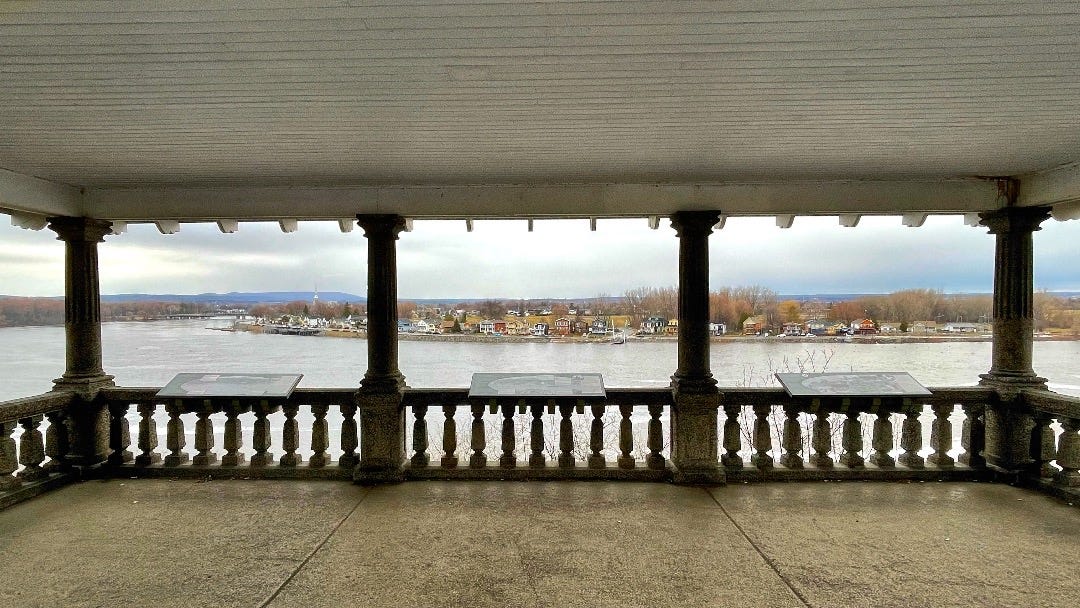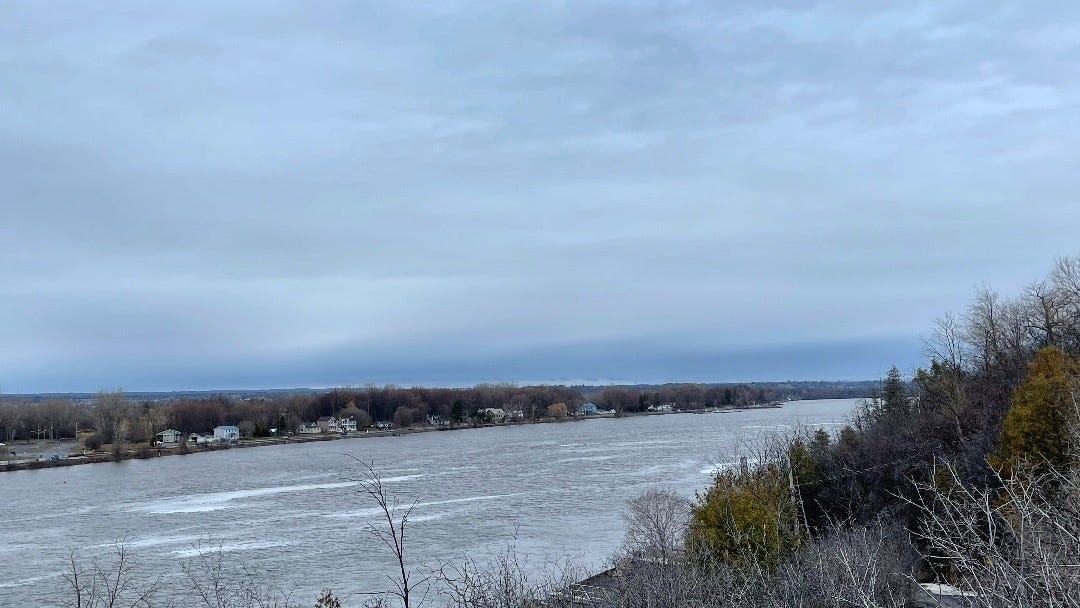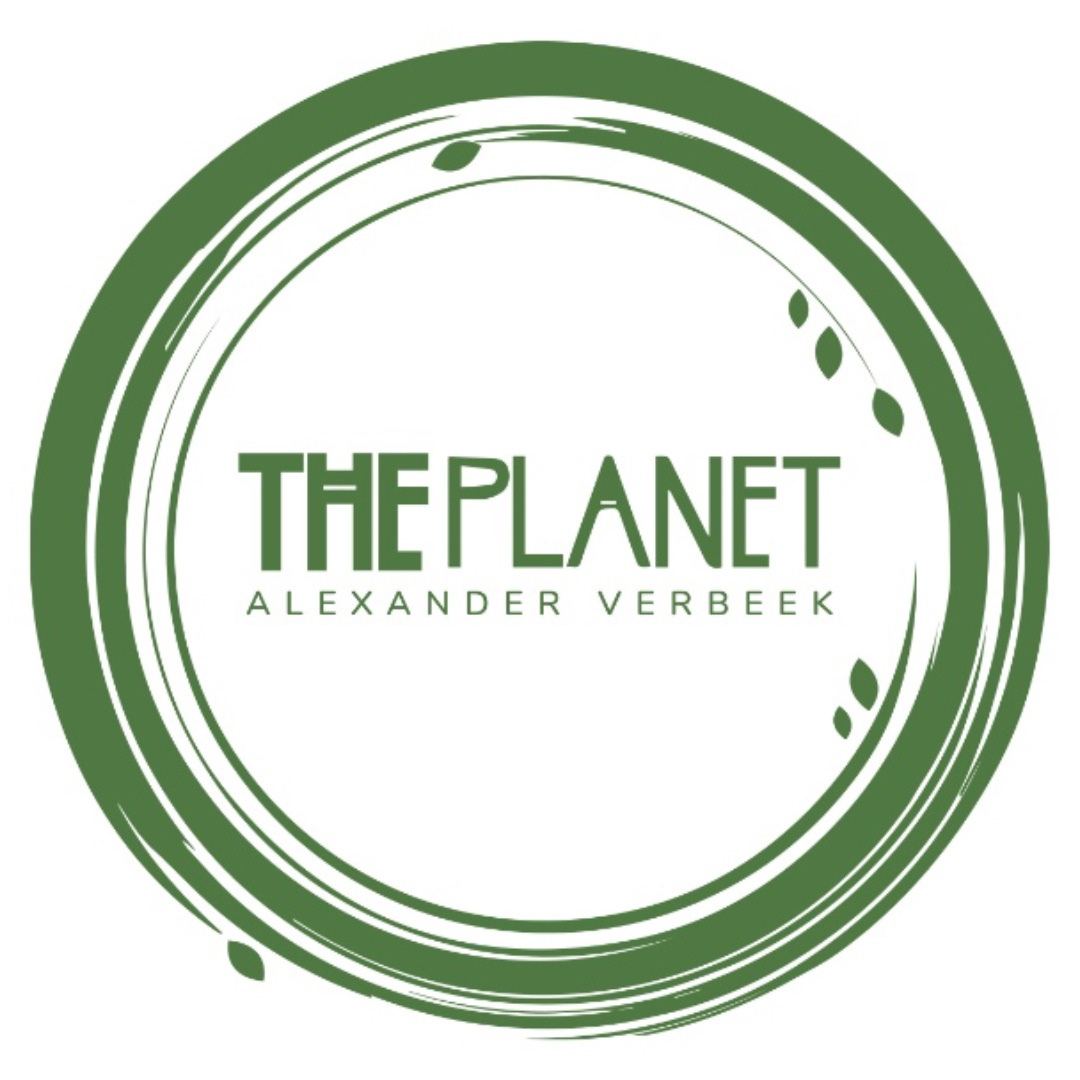The rare occasion that Ramadan, Passover, and Easter all coincide
Thoughts while walking along the river.
On this rainy day, I walked along the shore of the Ottawa River, enjoying a typically Canadian scene of water, forests, and hills. It's a stark contrast with the island where I live in the Netherlands, where there are no hills and hardly any forests in the flat green fields behind the dunes and dikes. But there is the abundance of water that connects these two countries and lots of shared history that I wrote about when I visited some of the thousands of Canadian war graves in my country.
When Ramadan, Passover, and Easter all coincide
Water is vital in the identity of every country, as well as in every religion. Water and religion should unite people and not divide them, which I hope is the way more people see it at this particular moment when the world enjoys, under a full Pink Moon, the rare occasion that Ramadan, Passover, and Easter all coincide. The next time this will happen is in 2055, when you can be sure that the world will have dramatically changed, albeit in ways no one can predict.
Perhaps it will be a better world, where Muslims, Jews, and Christians will respect each other and celebrate together. Today, the world seems to have forgotten about the unique meaning of the Abrahamic faiths celebrating at the same time. Just look at the front page of your newspaper or the trending topics on your favorite social media. You will be reminded how far humanity has drifted from fundamental values like compassion, solidarity, and respect for each other that are common to all religions.
Where three great rivers meet
On this particular weekend, when three religions celebrate major holidays, I walked where three great rivers meet: the Gatineau, Rideau, and Ottawa rivers connect in Canada's capital. Then, a bit further along the river, I read about the history of this particular spot where you can see the Gatineau and Ottawa Rivers converge. The point where the Rideau River flows into the Ottawa River is just a ten-minute walk further to the west. This confluence of rivers explains the capital region's strategic importance long before there was even a city; three converging rivers make this an ideal spot for transport, trade, and even politics.
Ottawa is now connected to the Trans-Canada Highway, a transcontinental federal-provincial highway system that spans nearly 7,500 km (4,645 mi). But long before the first highways and cars were built, the water formed a similar connection across Canada. From this spot, you can paddle a chain of lakes and rivers that stretches over 8000 kilometers from the Atlantic, west to the Pacific, and north to the Arctic. Then, I realized I was looking at the original Trans-Canada Highway. To the east, it is 200 kilometers to Montréal, while it takes 7800 kilometers of travel to reach Betta Coola in British Columbia if you go west from this spot.
I took this photo in Ontario, just north of the capital, but what you see is Gatineau in Quebec. It is the fourth city of the province, and what you see in this picture is Pointe Gatineau, a village a bit to the north that has become part of the city. A likely explanation for the origins of the town's name is the historical connection to a fur dealing clerk named Nicolas Gastineau. His name appeared first in New France in 1648. Gastineau, a native of Paris, worked for the “Compagnie des Cent Associés in Trois-Rivières”. The Gatineau River was part of a long-used fur-trading route, but historians have not been able to find evidence that Gastineau actually traveled down the Gatineau. The best indication of a connection between him and the city's naming is the discovery in notarial records that his sons have been in the Pointe-Gatineau area in the late 17th century.
A side note: I failed to find out why no expert suggests that this spot is simply named after one of the sons (or both of them) instead of the father. After all, if you can't find proof that the father of Amerigo Vespucci ever sailed along the shores of Brazil, it becomes more likely that America is named after his son. (Note that his father had a different first name: Nastagio Vespucci, which would have altered history in many ways if he had sailed to the west, including the naming of the U.S.A, a country that would then have been known as U.S.N).
Timber rafts
I love to watch the landscape at this spot where these rivers converge. Imagine that already, for thousands of years, people have paddled these rivers. Or think of the 1800s when vast timber rafts floated down these rivers all the way to Quebec City. For years people had speculated that this couldn't be done. But in 1806, Philemon Wright, the founder of Hull, launched a raft of 700 squared logs from the far shore. For two months, he and his crew battled the wild rapids of the Ottawa and St. Lawrence rivers to get the wood to market. His triumphant arrival in Quebec City began a century of timber rafting on the Ottawa.
Ninety years later, in 1896, Lady Aberdeen, the wife of Canada's governor-general, nearly drowned on the same far shore where Wright started his journey. She had taken the ferry for a spring outing from about the spot where I took the first photo. But her ponies slipped, overturning her carriage into the icy Gatineau river. The ponies were swept away, but Lady Aberdeen held on until help came. Then, in thanks for her rescue, she donated a bell to St. François de Sales Church. The bell is still there today, and you can see the church in this picture. You can also see the dark clouds; I walked home just in time before it started to rain.
I write these newsletters, share my photos, do interviews, make podcasts about the environment, and share my travels because I believe that together we can do better on this beautiful but fragile planet.
If you are a paying subscriber: thank you for your support!
Please consider supporting this initiative by taking a paid subscription if you are not.
The Back Page:
Some recent podcasts:
“News, history, science, wildlife, and even dogs and cats”, listen on Spotify here.
”How to green our transport options”, listen on Spotify here.
You can follow my podcasts on Callin here.
Notes:
https://en.wikipedia.org/wiki/Trans-Canada_Highway
https://www.tfcg.ca/history-of-pointe-gatineau











Thank you, Alexander. This is a fine read just before going to bed. Now I can dream of floating down these vast rivers, hopefully without the challenges of waterfalls, those would wake me up for sure. Canada is beautiful (-:
A lovely story, Alexander! In a world that is full of bad news your letters bring balance by pointing out the goodness that still exists. Thank you for that! ❤️🙏🏼❤️